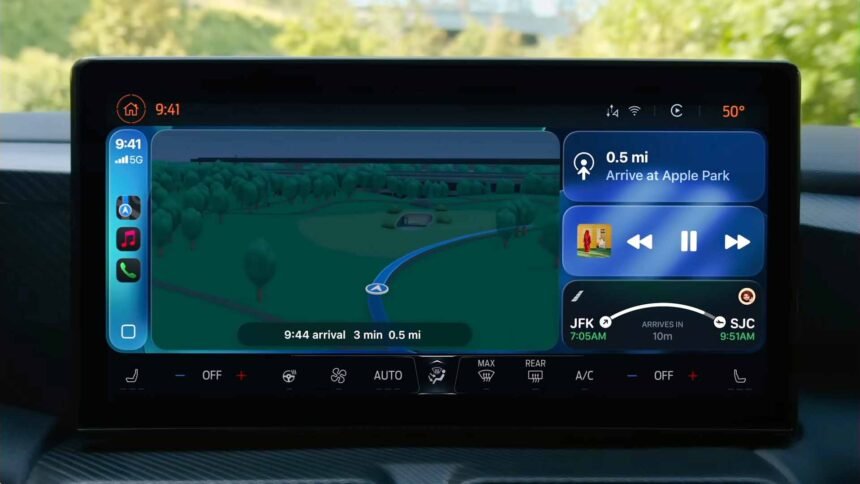Generally speaking, I think there are four types of laptops. The very limited ultra-thin portable, all-rounder, big beefy gaming or production laptop and two-in-one type device with heaps of compromises. But it’s within that last category I find the most promising of all.
The Dual Screen laptop.

The ASUS Zenbook Duo is the latest example of a mobile desktop without the clutter. I gave Lenovo’s Yoga Book 9i EVO my top award for 2023 but as I told Tim Gilbert on Sky News Australia in the video above, this ASUS model is something else.

Let’s look at some key specs.
Design: Dual 14″ 3K 120 Hz ASUS Lumina OLED 16:10 touchscreens in a 1.35 kg ultraportable device create a 19.8″ visual workspace. Kickstand plus Bluetooth keyboard/trackpad.
Versatile: multiple modes, including dual screen, laptop, desktop, and sharing
Performer: Intel® Core™ Ultra 9 processor; premium audiovisual experience; 2 x Thunderbolt™ 4, USB 3.2 Gen 1 Type-A, HDMI® 2.1 (TMDS)
AI: Content creation with responsive, upgraded graphics, a processor with integrated AI acceleration, and Windows Copilot
Available now: The ASUS Zenbook Duo is available from ASUS and JB Hi-Fi and other retailers for A$3,999
Once you get it, you’ll never look at another standard laptop the same way again. Once I starting using this form factor I was quickly won over by the extra screen real estate. It gave me the sense of using a travelling desktop without the bulk.

The ASUS design team made some clever choices with this model. The rechargeable keyboard can be detached to allow full use of the visual workspace or be placed on the lower display for a traditional clamshell laptop experience. The pogo-pin connectors on the edge of the lower screen ensure hassle-free docking, with auto-positioning magnets on the pogo pins and corners of the second screen to further enhance the overall user experience.

It comes in pretty light too at just 1.35 kilos. The dual full-size 3K 120 Hz ASUS Lumina OLED 16:10 displays can be moved into a flat position thanks to the 180° hinge. The visual workspace increases to a quite large 19.8 inches. This can be used in vertical or horizontal orientations for a number of versatile user modes — Laptop, Dual Screen, Desktop, or Sharing — controlled by ASUS ScreenXpert software.

The ASUS Lumina OLED displays are gorgeous. They are Dolby Vision certified, Pantone Validated and have a cinema-grade 100% DCI-P3 colour gamut. They are also VESA DisplayHDR True Black 500 certified for the deepest black levels and have 120Hz Motion Clarity for more frames per second, improving the display for fast-moving and smooth visuals.

When it comes to power under the bonnet, ASUS has impressed with an Intel Core Ultra 9 processor with an integrated Neural Processing Unit (NPU) for AI acceleration, up to 32 GB of LPDDR5x memory, up to a 1 TB PCIe® 4.0 SSD, a long-lifespan 75 Wh battery, and a Harman Kardon-certified Dolby Atmos® audio system.
The ScreenXpert software is intuitive and allows easy control of the display contents in all modes:
Dual Screen mode: When used with the wireless keyboard, this mode provides 19.8 inches of screen real estate, which can be used as a single expansive screen via the ViewMax feature. Alternatively, the twin 16:10 displays can be used independently, with easy window management via the App Switcher feature that puts users in full fingertip control of app windows, reducing interruptions and helping users maintain focus on the task at hand.
Desktop mode: The laptop can be used with the hinge aligned vertically for side-by-side portrait screens. Combined with the wireless keyboard, this makes it perfect for programmers, researchers, writers, and those who need access to large data worksheets for things like financial analysis — and many more. Users can display productivity apps on one screen while the other shows reference materials, documentation, or research sources. Alternatively, using the ViewMax feature they can display content across the entire screen width, giving them a massive 19.8-inch display.
Laptop mode: Users can place the ASUS ErgoSense Bluetooth keyboard and touchpad onto the lower display for a traditional laptop-style experience, replete with a 14-inch display and tall 16:10 aspect ratio. A pogo-pin connector automatically recharges the keyboard. Alternatively, the lower screen can be configured as a full-size virtual keyboard if required, so users don’t have to travel with the keyboard if space is tight.

Sharing mode: Allows easy content sharing in meetings and business presentations. The 180° hinge allows the screens to lay flat so everyone can view the screen without having to huddle around, fostering better engagement and discussion. Additionally, content on the upper screen can be rotated by 180° if needed.
For video calling, the ASUS AiSense camera with Windows Studio Effects such as, background blur, eye contact correction, automatic framing and ASUS 3DNR. Two-way AI Noise Cancellation leverages a deep-learning database to reduce background noise for the microphone and audio.
FINAL THOUGHTS
The biggest frustration for me when computing, is lack of multiple screens. I’m not talking about one big screen, I mean multiple. I want my content separated on different displays at home, the office or on the road. But I don’t want to be carrying a stack of portable monitors with me and powered hubs.
So that’s why I love these dual screen laptops so much. They are light and compact yet powerful enough to get most tasks done – with two screens.
ASUS has done a fantastic job here with the ASUS Zenbook Duo and I can’t wait to see how this category develops.






